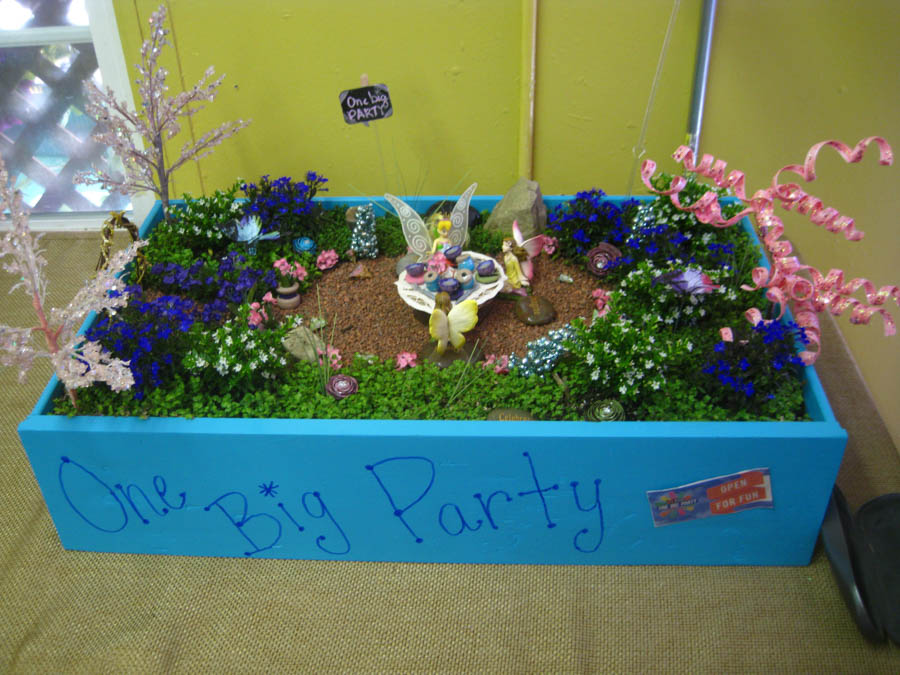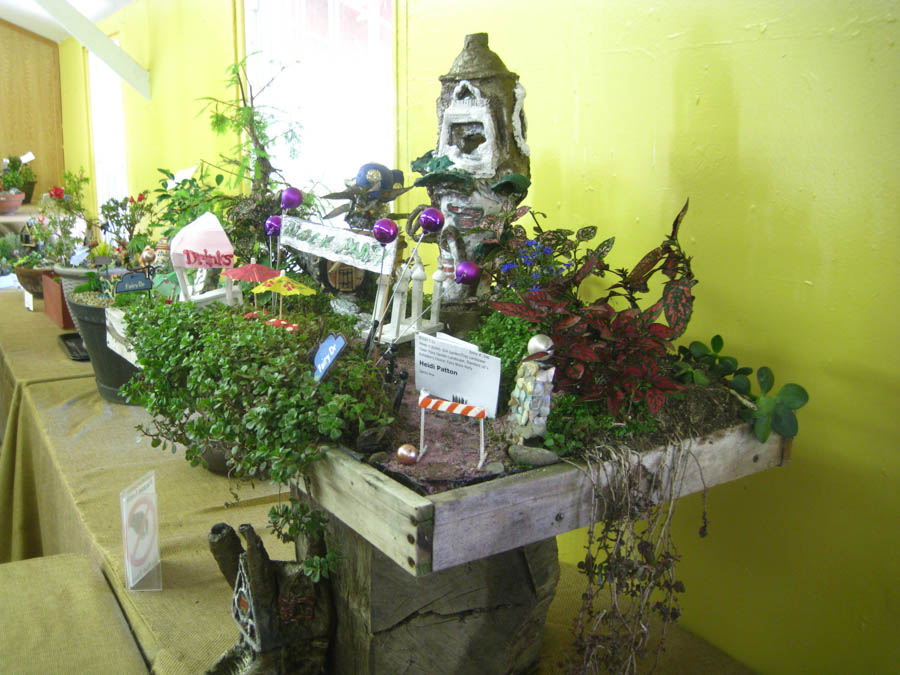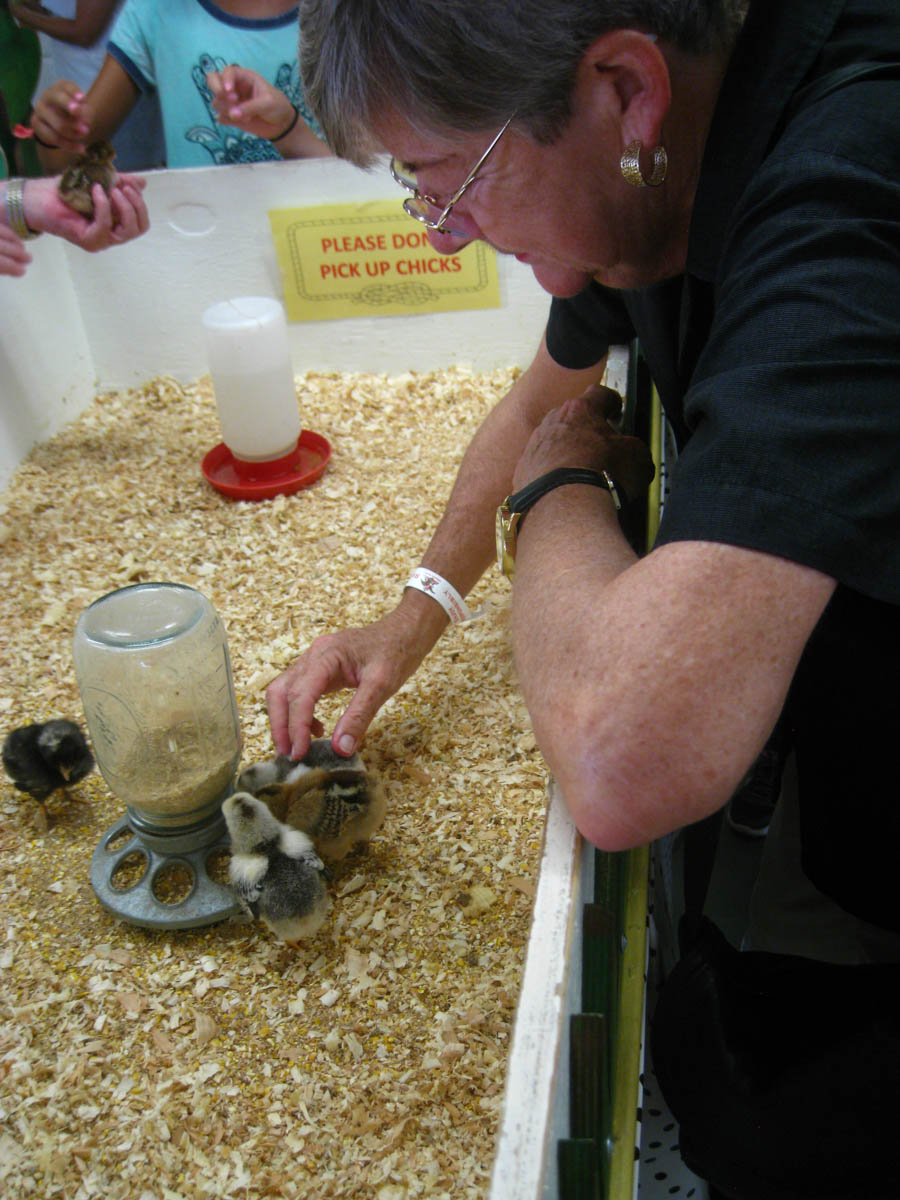Visit #2 August 8th 2015 (Page Five)
We left the ice house and headed for the flower displays and piggies. The heat was starting to get us! Mostly the humidity!

The stilt people were making the rounds

They surprised several people!
Flowers Everywhere

Nice displays

Little bonsai's were underway
Did You Know?
That the origin of Bonsai, while often attributed to the Japanese, is actually Chinese in derivation. Many experts agree that bonsai, know as Pensai in China, was practiced by scholars, monks and the noble classes of China as far back as 600 A.D. A few centuries later, bonsai, along with Zen Buddhism, and much of the best of Chinese culture was brought to Japan.
That the word "Bonsai", which is pronounced "Bone- Sigh", is made up of the two Japanese characters: "Bon" meaning tray and "sai" meaning plant, which when literally translated means: tray plant. Of course, the cultivation of bonsai trees has advanced much since its humble start as plants in trays.
That an earthquake is responsible for shifting the "epicenter" of bonsai cultivation in Japan. In 1923 an 8.3 magnitude earthquake devastated the entire Kanto region of Japan. Destroying vast portions of the two largest cities: Tokyo and Yokohama; along with a majority of the commercial bonsai businesses. As a result, the bonsai business community, in an effort to save their livelihoods, collectively purchased a tract of land outside of Tokyo, in the Omiya region, where their businesses once again flourished. Hence, a new epicenter of bonsai cultivation in Japan was created (which exists and thrives to this day).

Interesting displays

Welcome into the teapot

Sue found the chicks!

We thought the chick would like to go home with us!

Itty bitty fur balls!

He probably liked the warmth of her hands

Colors everywhere
Did You Know?
-
Before modern materials were developed dried Sunflower stalks were used in the manufacturing of life jackets, they provided buoyancy.
-
The Titan Arum is considered the world's largest flower at three meters tall, unfortunately it is also the world's smelliest. A native of the central Sumatran rain forest it is known affectionately as the Corpse Flower for its strong aroma reminiscent of rotting flesh.
-
The worlds oldest flower is thought to have blossomed about 125 million years ago, it's fossilized remains were discovered in 2002 by scientists in north-east China. Referred to as "the mother of all flowers", Archaefructus sinensis resembles the modern water lily.
-
The Tulip, a symbol of life, love and immortality, dates back to the time of Confucius. By the late 1600's bulb prices in Holland often exceeded the price of precious metals and a single bulb is said to have sold for more that $2,000. As well tulip bulbs can be used in place of onions for cooking.
-
The sap of the Daffodil contains sharp crystals that protect the flower from grazing animals. Prince Charles is paid one daffodil a year as rent for his lands on the Island of Scilly, off the coast of Cornwall
-
The Daisy got its name because the yellow center resembled the sun. It was commonly known as the "day's eye" and over time, was eventually called daisy.
-
Struck by the resemblance between the sheath of the Gladiolus flower and the weapon that was carried by soldiers at the time, a Roman scientist of the first century A.D. named the flower "gladiolus" from the Latin word "gladius" which means sword.
-
Scientists assert that there are over 270,000 species of flowers that have been documented and are existing in the 21st Century.
-
During the Victorian era, in England the language of flowers was as important to people as being "well dressed." As an example, there cognizable scent of a particular flower, plant or perhaps a scented handkerchief sent its own unique message to others
- Fox-Glove was originally named based on the belief that foxes used top ut the flowers over their paws to quieten the sound of their footsteps when hunting.

An amazing burger!

Flowers are amazing!

The sunflower was magnificent

So very pretty

Roses anyone?

Look like it was battery powered

Into the garden

She just had the babies about a week ago!

The runt was amazing!

The sand sculpture was still under construction
Did You Know? - Sand grains will not stick together unless the sand is reasonably fine. While dry sand is loose, wet sand is adherent if the proper amounts of sand and water are used in the mixture. The reason for this is that water forms little "bridges" between the grains of sand when it is damp due to the forces of surface tension.
When the sand dries out or gets wet, the shape of a structure may change, and "landslides" are common. Furthermore, the mixture of fine (mostly sharper) and coarse sand granules is very important to achieve good "sand construction" results.
Fine granules that have been rounded by the natural influences of seas, rivers or fluvials, in turn negatively influence the bonding between the individual granules as they more easily slide past each other.

Loads of sand!